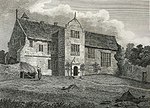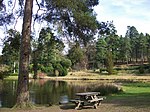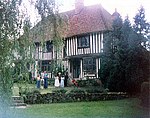Combwell Wood
Forests and woodlands of KentSites of Special Scientific Interest in Kent

Combwell Wood is a 110.6-hectare (273-acre) biological Site of Special Scientific Interest south-east of Tunbridge Wells in Kent. The wood is part of the High Weald Area of Outstanding Natural Beauty. It is divided into 36 sections owned by different people.Much of this ancient wood has traditionally been coppiced, but there has probably been undisturbed woodland on steep slopes, and uncommon bryophytes here are thought to be survivors from the Atlantic warm period around 5,000 years ago. There are also several nationally scarce water beetles.The site is private land, but a public footpath goes through it.
Excerpt from the Wikipedia article Combwell Wood (License: CC BY-SA 3.0, Authors, Images).Combwell Wood
Rogers Rough Road, Tunbridge Wells Goudhurst
Geographical coordinates (GPS) Address Nearby Places Show on map
Geographical coordinates (GPS)
| Latitude | Longitude |
|---|---|
| N 51.081 ° | E 0.434 ° |
Address
Rogers Rough Road
Rogers Rough Road
TN17 2RL Tunbridge Wells, Goudhurst
England, United Kingdom
Open on Google Maps











